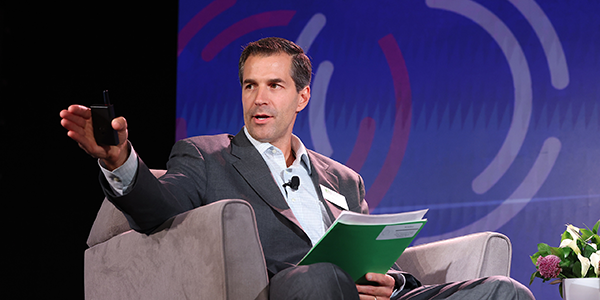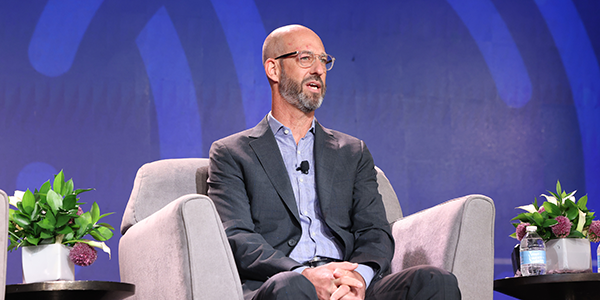“In the Wave 49 survey, respondents were asked when their organization expected to return to pre-pandemic occupancy levels. Across all care segments the most common response was for occupancy to return at some point in the first half of 2023. Independent living (52%) and memory care (53%) operators were the most optimistic respondents, with more than half anticipating their organization’s occupancy levels would return to pre-pandemic levels within the next six months.
Employee retention, on the other hand, is becoming increasingly challenging. On average, one-quarter (25%) of organizations kept more than 80% of new staff on the job after one month. This is down from the Wave 45 survey, conducted in August and September 2022 when just under one-third (29%) kept more than 80% on the job after one month, and down again from the Wave 39 survey, conducted in March 2022, when just under one-half (46%) had more than 80% retention after one month.
–Ryan Brooks, Senior Principal, NIC
This Wave 49 survey includes responses from December 12, 2022 to January 15, 2023, from owners and executives of 48 small, medium, and large senior housing and skilled nursing operators across the nation, representing hundreds of buildings and thousands of units across respondents’ portfolios of properties. More detailed reports for each “wave” of the survey and a PDF of the report charts can be found on the NIC COVID-19 Resource Center webpage under Executive Survey Insights.
In the Wave 49 survey, respondents were asked when their organization expected to return to pre-pandemic occupancy levels. Across all care segments the most common response was for occupancy to return at some point in the first half of 2023. Independent living (52%) and memory care (53%) operators were the most optimistic respondents, with more than half anticipating their organization’s occupancy levels would return to pre-pandemic levels within the next six months.
Despite optimism from the majority of respondents, a small portion of operators – mostly nursing care — anticipate it will take until 2025 or later before occupancy returns to pre-pandemic levels. One-fifth of nursing care respondents anticipate occupancy levels won’t return until 2025 or beyond. Few respondents from assisted living (3%) and memory care operators (3%) anticipate the recovery will take this long, while no independent living operators anticipate the recovery to take until 2025. 
As for predictions for the near-term, the share of assisted living (33%) and memory care (32%) operators reporting an acceleration in the pace of move-ins in the past 30 days fell to one-third of respondents. This marks the fourth consecutive wave with a decrease in assisted living and memory care operators reporting an acceleration in the pace of move-ins. For assisted living operators, there has been a consistent and steady decline in the share of respondents reporting an acceleration in the pace of move-ins, down from a series-high of 62% in Wave 39 conducted in March 2022.
The share of operators reporting a deceleration in the pace of move-ins in the past 30 days tempered for independent living (18%), assisted living (12%), and memory care properties (12%). The share of nursing care properties reporting a deceleration in the pace of move-ins in the last 30 days moved to 17%, compared to 6% in Waves 48 and 47.*
When asked about the biggest challenges currently facing their organizations, the most cited response was attracting community and caregiving staff (85%), followed by rising operator expenses (77%), staff turnover (69%), and low occupancy rates (40%). Additionally, more than 90% of respondents report currently experiencing a staffing shortage. 
Of operators reporting tapping agencies to supplement existing staff, two-fifths (42%) cite nurse aides to be the most common need, followed by one-third (34%) of nurses. Food service workers (14%) and plant operations roles (7%) also drive demand for agency utilization, but not nearly to same degree as nursing and nurse aide positions.
Regarding tenure of newly hired, full-time employees, on average, one-quarter (25%) of organizations kept more than 80% of new staff on the job after one month. This is down from the Wave 45 survey, conducted in August and September 2022 when just under one-third (29%) kept more than 80% on the job after one month, and down again from the Wave 39 survey, conducted in March 2022, when just under one-half (46%) had more than 80% retention after one month. 
Looking at longer-term retention, on average, just 5% of organizations retained more than 80% of new staff after one year. This metric is also down from the Wave 45 survey, conducted in August and September 2022, when just over one-tenth (12%) of organizations retained more than 80% of new staff at the one-year mark. Despite the indicated challenges with staff retention, two-thirds (67%) of respondents expect their agency staff utilization to decrease in the next six months, while just one-third (31%) expect their agency utilization to remain the same.
Respondents were also asked whether their organization expected to increase or decrease specific care segments in their portfolio of properties over the next 12 months. For the first time since this question was introduced to the Executive Survey Insights, there were operators reporting expected decreases in memory care and assisted living properties over the next 12 months. Compared to Wave 47 conducted in October and November 2022, fewer operators expect to increase care segment growth of active adult within their portfolio of properties, down from over one-half (53%) to under one-third (31%). Opposingly, more operators expect to increase nursing care segment within their portfolio of properties.

Wave 49 Survey Demographics
- Responses were collected between December 12, 2022 and January 15, 2023, from owners and executives of 48 senior housing and skilled nursing operators across the nation.
- Owners/operators with 1 to 10 properties comprise roughly one-half of the sample (52%). Operators with 11 to 25 properties account for one-quarter and operators with 26 properties or more account for another one-quarter.
- More than one-half of respondents are exclusively for-profit providers (65%), one-quarter operate not-for-profit seniors housing and care properties (27%), and 8% operate both.
- Many respondents in the sample report operating combinations of property types. Across their entire portfolios of properties, three-quarters (77%) of the organizations operate senior housing properties (IL, AL, MC), 29% operate nursing care properties, and 35% operate CCRCs – also known as life plan communities.
As we approach Wave 50 of Executive Survey Insights, the ESI 2023 questionnaire will move to a monthly cadence. We want to tell an accurate story about our industry’s performance and current challenges, so in each new survey, you may see new questions added based on respondents’ suggestions.
Wave 50 of the Executive Survey Insights will open on January 23, 2023 and will be collecting responses through February 2023. If you are an owner or C-suite executive of senior housing and care and would like an invitation to participate in the survey, please contact Ryan Brooks at rbrooks@nic.org to be added to the list of recipients.
NIC wishes to thank survey respondents for their valuable input and continuing support for this effort to provide the broader market with a sense of the evolving landscape as we recover from the pandemic.
* Commentary revised Jan. 24, 2023







